At a glance
This toolkit presents valuable information about heart valve disease that partners and advocacy organizations can use to help educate and inform audiences about risk factors, screening, and treatment options.

Heart valve disease awareness and education talking points
These messages are designed to help you communicate about heart valve disease—as part of the work you are already doing—and to further educate communities about cardiovascular disease. Your efforts can make a difference by helping spread the word and educate more people about this condition.
Heart valve disease impact
- More than 5 million people in the United States are diagnosed with heart valve disease each year.
- Aortic stenosis is the most common form of heart valve disease in developed countries.
- Heart valve disease is underdiagnosed and undertreated, especially in African American, Hispanic, and Asian populations.
- Aortic stenosis is the most common form of heart valve disease in developed countries.
- 75% of U.S. adults and nearly a third of those aged 65 and older know little to nothing about heart valve disease.
Heart valve disease risk and prevention
Risk factors
- By learning about family health history and individual risk, people can begin to know what concerns to discuss regarding heart valve disease with their health care team.
- Risk factors include:
- Older ages (in the United States, aortic stenosis affects 5% of people over the age of 65).
- Family history of heart valve disease or other heart disease.
- A personal history of heart disease, such as heart failure or heart attack.
- High blood pressure, high cholesterol, diabetes, and smoking.
- Congenital heart disease (heart valves formed incorrectly before birth).
- A history of rheumatic disease or endocarditis.
- Radiation exposure and chemotherapy during cancer treatment.
- Older ages (in the United States, aortic stenosis affects 5% of people over the age of 65).
Explaining Heart Valve Disease
Prevention
People can do a lot to improve their heart health and reduce their risk for heart valve disease, including:
- Making heart-healthy choices by:
- Choosing heart-healthy foods, such as fresh fruits and vegetables.
- Following CDC physical activity guidelines for heart health.
- Managing stress.
- Choosing heart-healthy foods, such as fresh fruits and vegetables.
- Getting to know your heart health by:
- Getting annual physical checkups, including having a health care professional listen to your heart with a stethoscope.
- Letting your health care team know if you have noticed changes in your heartbeat.
- Getting annual physical checkups, including having a health care professional listen to your heart with a stethoscope.
- Taking care of your overall health by:
- Having a good daily oral hygiene routine and getting regular dental checkups to reduce risk of heart infection.
- Getting treatment for respiratory infections such as strep throat.
- Taking antibiotics as instructed to prevent infection (such as when they are prescribed before surgery or dental procedures).
- Having a good daily oral hygiene routine and getting regular dental checkups to reduce risk of heart infection.
Heart Valve Disease Prevention
Heart valve disease symptoms
- Heart valve disease can develop slowly over time, and not everyone experiences symptoms. People who do experience symptoms should describe their concerns to their health care team.
- Patients ages 65 and older may think that signs of heart valve disease are a normal part of aging.
- Signs and symptoms include:
- Fatigue, or feeling tired, especially during activity.
- Dizziness or fainting.
- Rapid weight gain (because of fluid retention).
- Swelling around the eyes, ankles, or abdomen.
- Chest pain.
- Irregular heartbeat.
- Fatigue, or feeling tired, especially during activity.
Know Your Risk and Symptoms for Heart Valve Disease
Heart valve disease diagnosis
- People should talk with their health care team about their family's heart health history.
- It is never too early for parents and guardians to discuss heart health as a part of pediatric wellness visits, especially if there is a family history of heart problems.
- Pediatricians play a key role in identifying congenital heart valve disease that may not have been detected at birth or during prenatal care.
- Early diagnosis, treatment, and routine monitoring of heart valve disease are critical to helping patients live healthy lives.
- Screenings such as stethoscope checks, echocardiograms, and timely referrals to cardiologists can help ensure that heart valve disease does not go unmanaged.
- Effective treatment options are available for heart valve disease, including noninvasive options. It is important to discuss the options that are best and what follow-up care may be recommended for each patient.
- As with any heart condition, continued care and regular screenings to monitor disease progression are needed for people who are living with heart valve disease.
- Screenings such as stethoscope checks, echocardiograms, and timely referrals to cardiologists can help ensure that heart valve disease does not go unmanaged.
Social media resources
Sample social media posts
Help to spread the word using social media messages to communicate important information about heart valve disease with your followers.
Audience: health care professionals
Facebook, LinkedIn, and Instagram
- Many U.S. adults living with heart valve disease don't know they have it. Help your patients understand their heart and the risk factors for heart valve disease. Check out CDC resources and information that health care professionals can use today: cdc.gov/KnowYourHeart #KnowYourHeart
- Health care professionals: Listen to your patients—and listen to their hearts. Identifying heart valve disease early is critical for helping people live healthy lives. Get the tools you need to educate your patients about the signs and symptoms. Visit cdc.gov/KnowYourHeart on heart valve disease from CDC. #KnowYourHeart
- Are you working in primary care? Health care professionals can make a difference in improving patients' quality of life, especially when it comes to heart health. CDC has resources and information you can use to guide your conversations with patients. Visit cdc.gov/KnowYourHeart to access the toolkit. #KnowYourHeart
- Heart valve disease is more likely to be diagnosed in people aged 65 and older. Symptoms can develop slowly and might be dismissed as signs of aging. CDC's toolkit can help doctors, nurses, and other health care professionals educate patients on the signs and symptoms of heart valve disease. Explore these resources at cdc.gov/KnowYourHeart. #KnowYourHeart
- Black, Hispanic/Latino and Asian adults are at a higher risk of heart valve disease compared to White adults. Awareness of this fact can help reduce disparities in health outcomes. Visit cdc.gov/KnowYourHeart for CDC resources to help your patients understand the risk factors and signs and symptoms. #KnowYourHeart
Twitter/X
- Many U.S. adults living with heart valve disease don't know they have it. Help patients understand their risks, then check out the CDC toolkit for resources & information that you can use today: cdc.gov/KnowYourHeart #KnowYourHeart
- Health care professionals: Listening to your patients & listening to their hearts is critical for identifying heart valve disease early. Visit cdc.gov/KnowYourHeart for resources you can use to guide your conversations about heart valve disease with patients. #KnowYourHeart
Audience: general public
Facebook, LinkedIn, and Instagram
- Do you know what heart valve disease is? Early diagnosis, treatment, and monitoring can prevent it from interrupting your life. Know the signs, symptoms, and risk factors, and ask your health care professional about screening. Check out CDC resources on heart valve disease and get to know your heart at cdc.gov/KnowYourHeart #KnowYourHeart
- Sometimes signs of heart valve disease can appear slowly or seem like something else. Visit cdc.gov/KnowYourHeart for resources and information from CDC on risk factors, signs, and symptoms to help get the conversation started. #KnowYourHeart
Twitter/X
- DYK that more than 5 million U.S. adults live with heart valve disease? Early detection and proper management are important for maintaining heart health. Learn about screenings, signs, and symptoms at cdc.gov/KnowYourHeart. #KnowYourHeart
Social cards
These graphics are designed to accompany social media posts to provide information on heart valve disease.
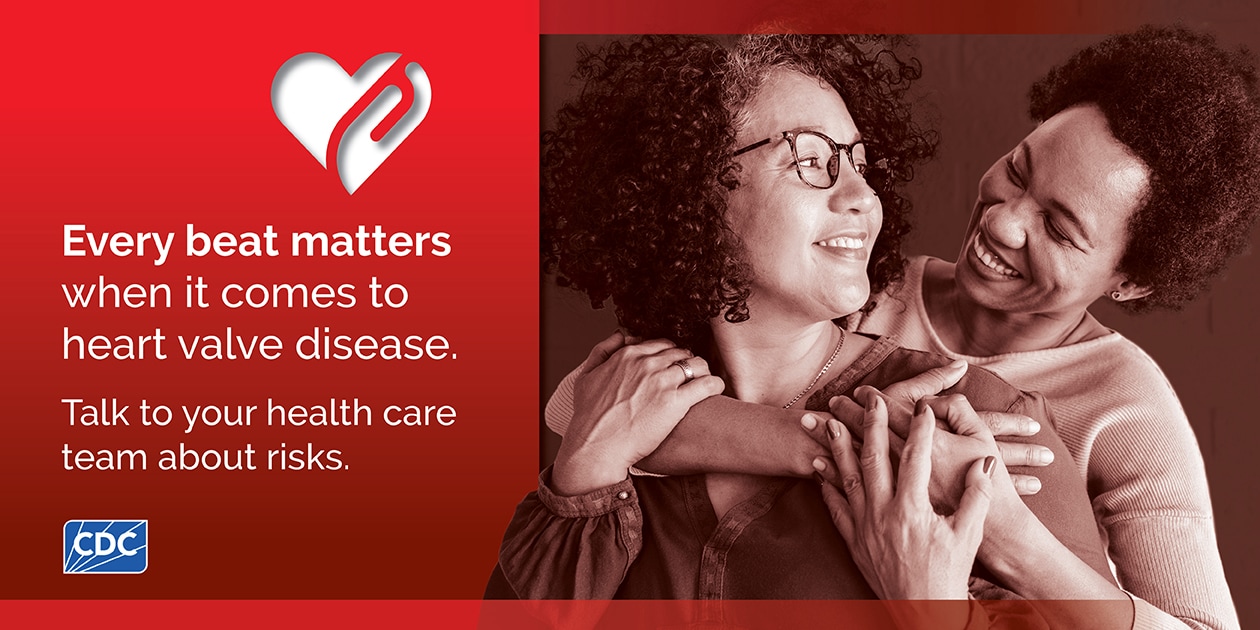
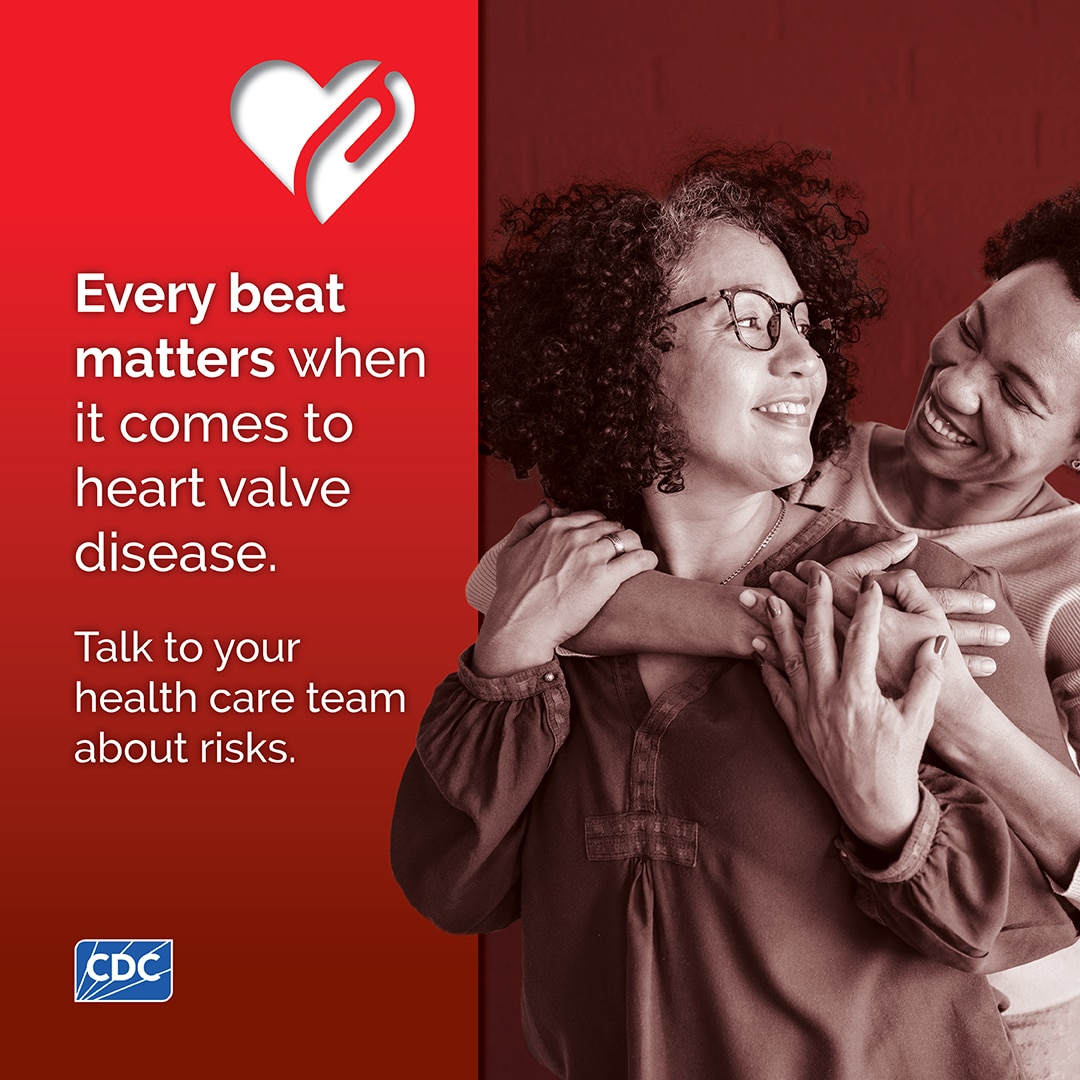

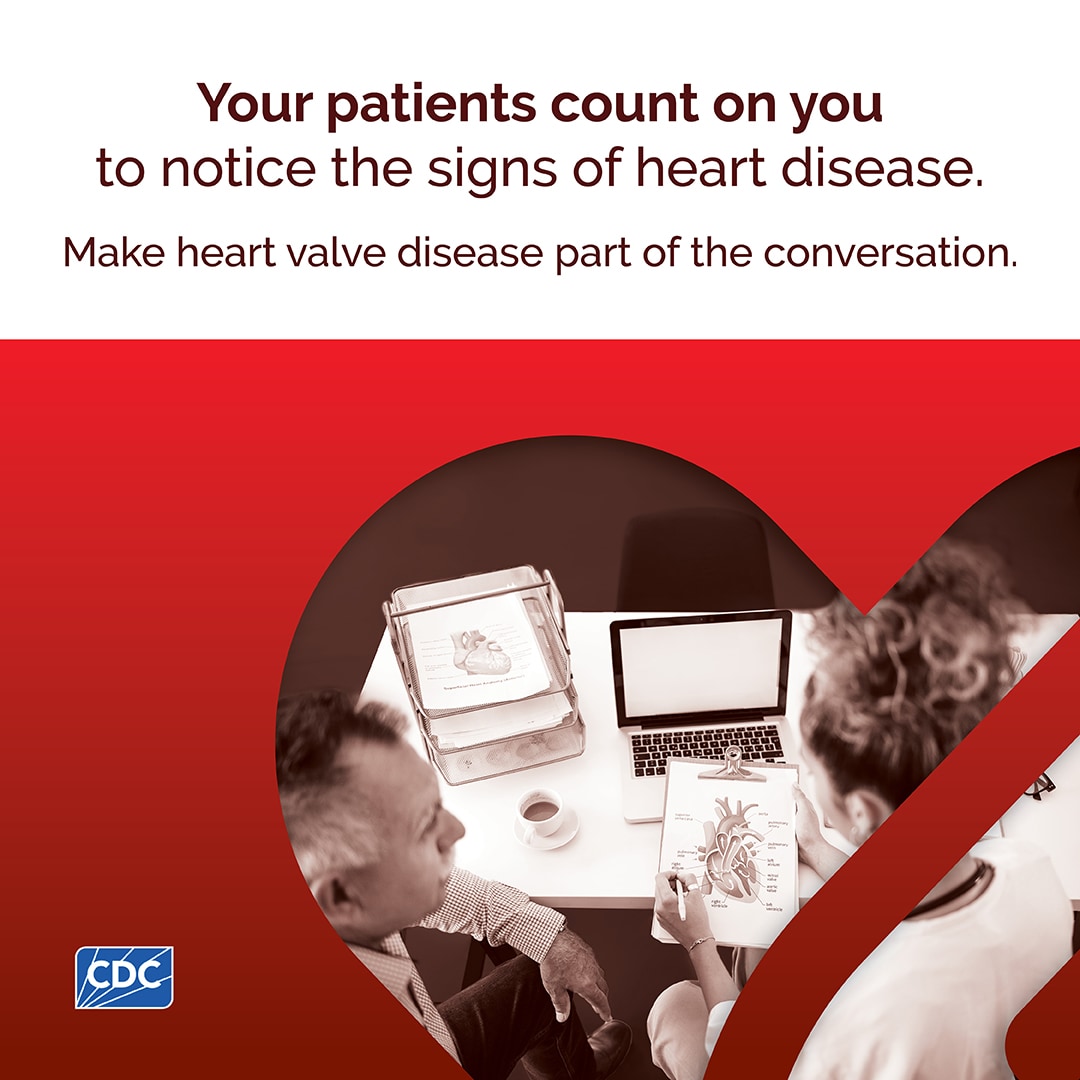
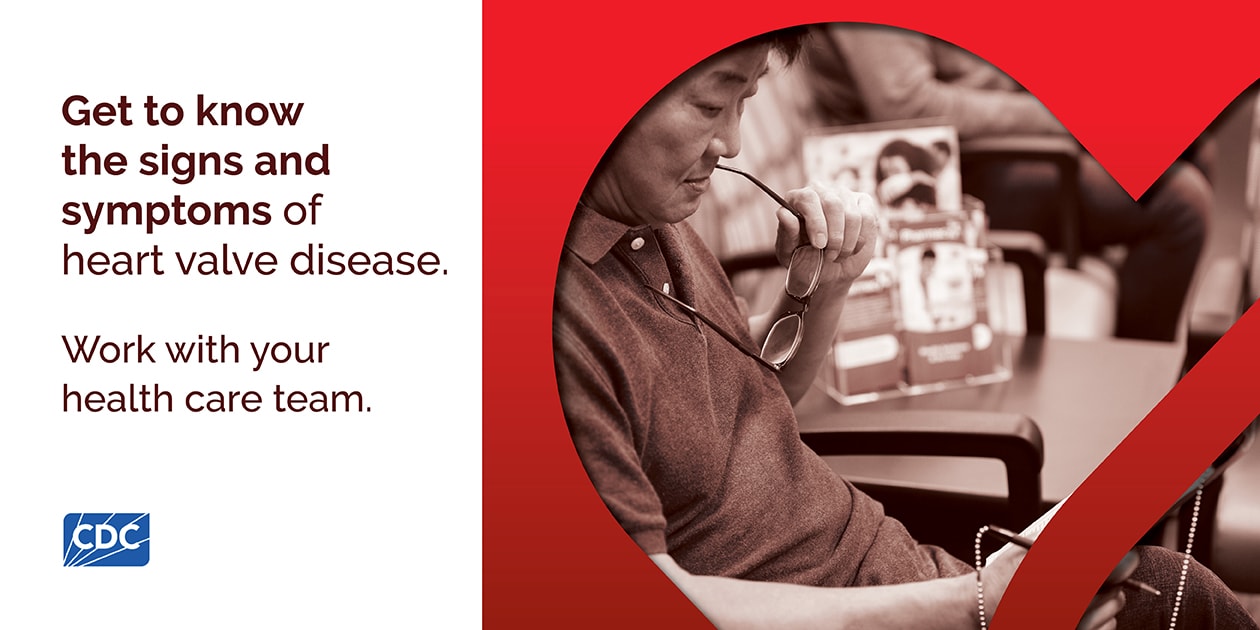



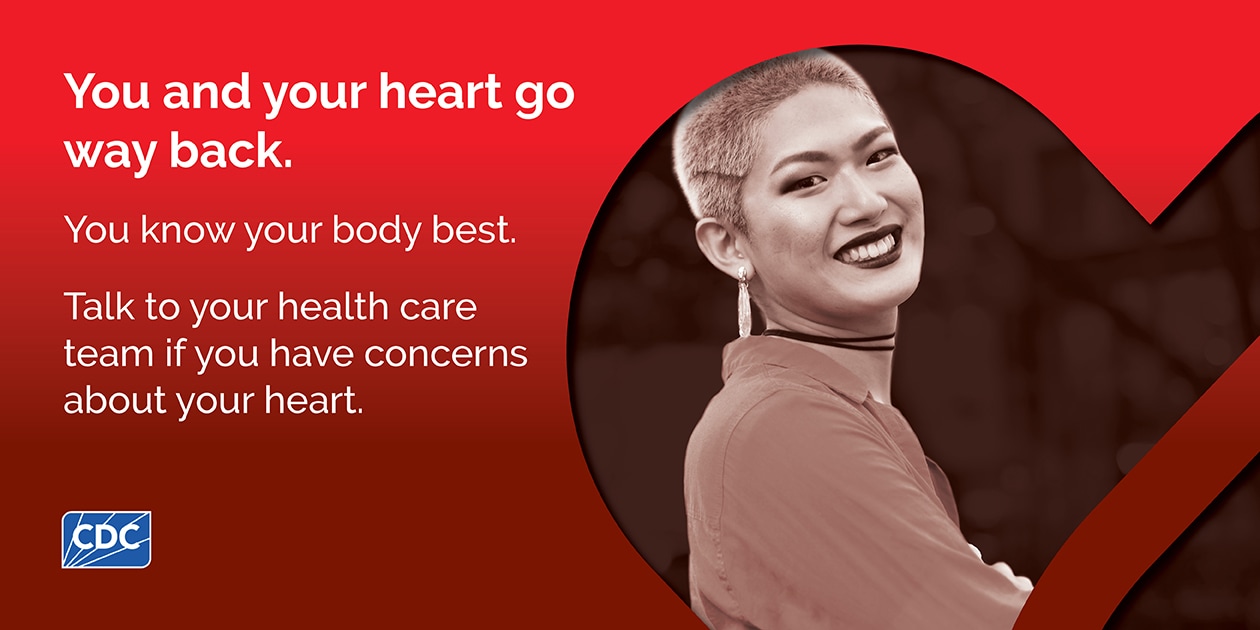
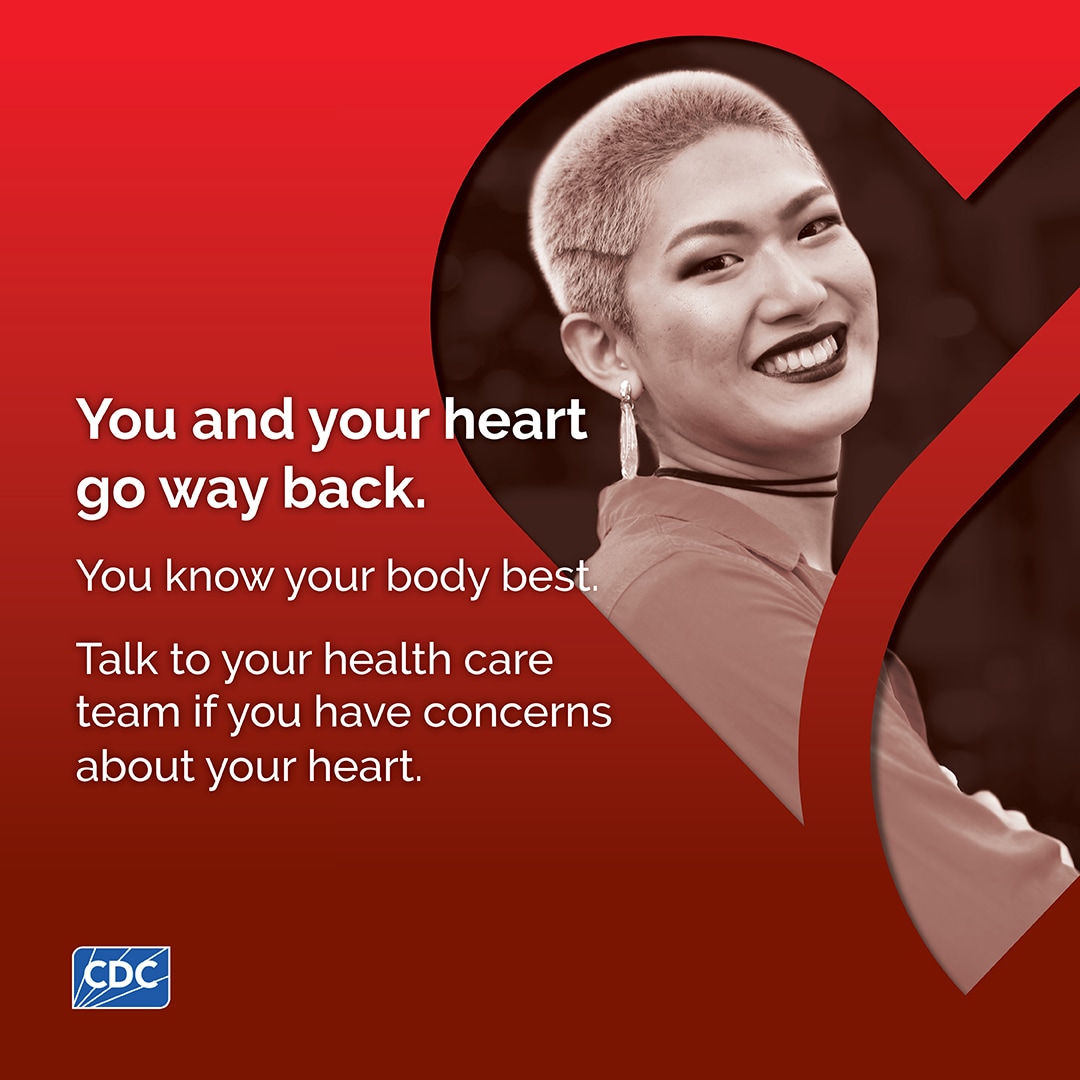
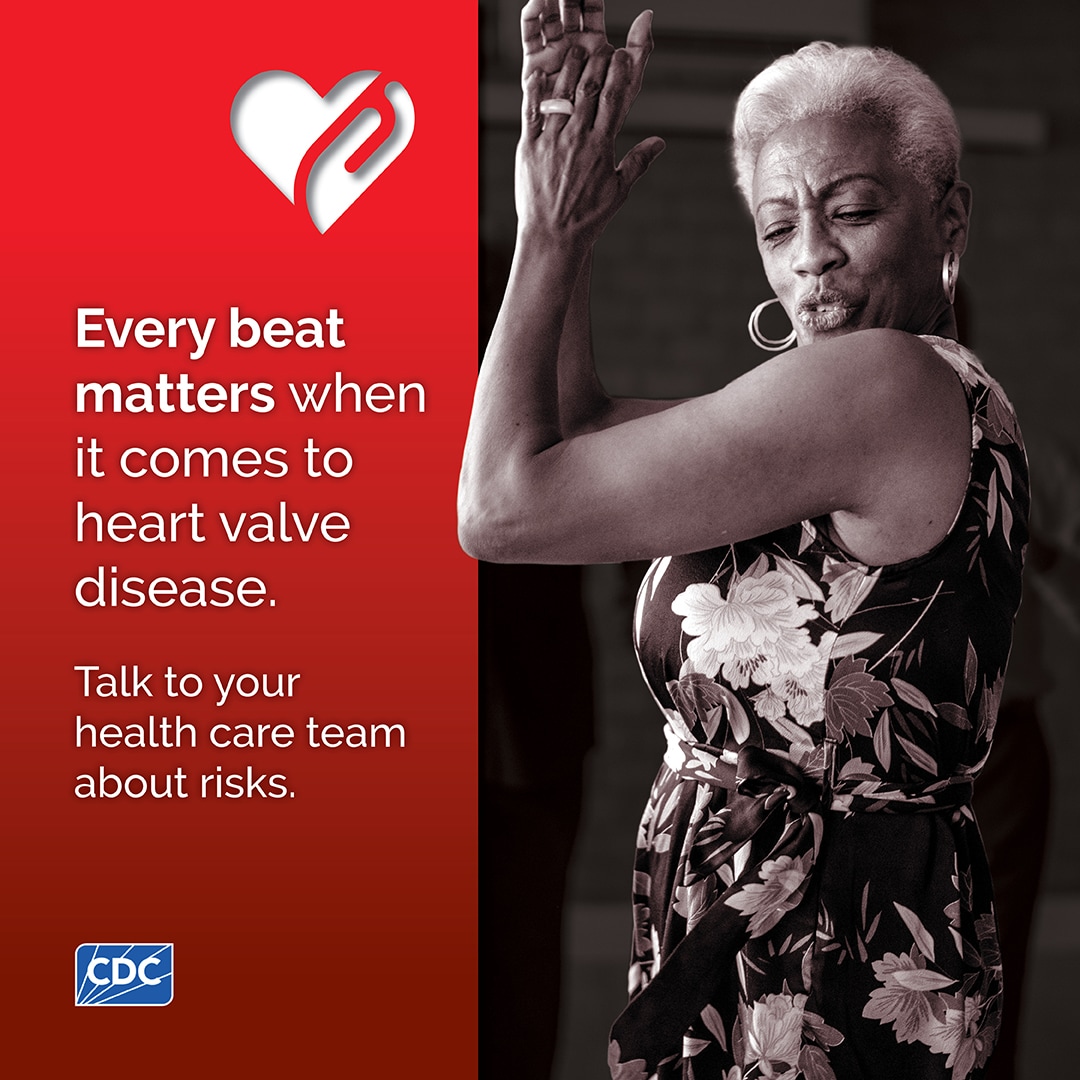



Web graphics
These graphics are designed to use on websites to promote heart valve disease awareness and can link back to CDC resources on cdc.gov/KnowYourHeart.

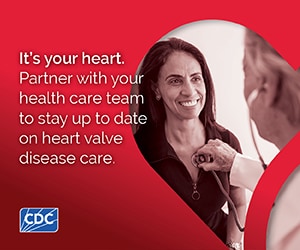
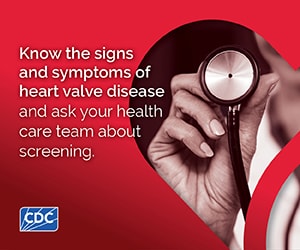



Drop-in content
Drop-in newsletter blurb
This is a sample newsletter blurb to help partners share information about heart valve disease risks, prevention, and symptoms.
The Centers for Disease Control and Prevention (CDC) Division for Heart Disease and Stroke Prevention is excited to announce all-new heart valve disease materials to help patients and health care professionals navigate screening, diagnosis, and management. For people at risk of or living with heart valve disease, it is important to know the symptoms and understand the value of screening, early detection, and monitoring the disease.
Explore the new resources for patients and health care professionals on heart valve disease at cdc.gov/KnowYourHeart and share them with your network.
Drop-in article
This is a pre-written article for partners to use along with media or other channels, such as blogs, to educate their audiences about heart valve disease.
Know your heart, know your risk for heart valve disease
What do you know about heart valve disease? If you answered nothing, you're not alone: Three out of four U.S. adults know little to nothing about the condition. For this reason, the Centers for Disease Control and Prevention (CDC) urges all of us to get to know our hearts.
Heart valve disease occurs when your heart valves don't work as they should, which makes your heart work harder.
"CDC is working to raise awareness about heart valve disease as part of our efforts to help U.S. adults reduce their risk for all types of heart disease," said Dr. Janet Wright, Director of CDC's Division for Heart Disease and Stroke Prevention. "We're sharing information and resources that patients and health care teams can use to better understand this condition and to empower people who are diagnosed to take charge and improve their health outcomes."
Heart valve disease can be congenital (something you are born with), or it can develop over time. Signs of a heart valve condition may be present at birth or can be detected through newborn screening. But sometimes signs of a heart valve defect may not appear until weeks, or even months, after birth. Around 2.5% of the population has heart valve disease. As the population ages, the numbers are expected to grow.
Heart valve disease can develop at any stage of life. Learning about your family medical history and your individual risk—along with getting screened and recognizing potential symptoms—can help you take steps to protect your heart and the hearts of your loved ones.
Things that can affect your heart valves:
- Infections, including rheumatic fever.
- Heart failure, heart attack, and other kinds of heart disease.
- Heart disease risk factors, such as hypertension, high cholesterol, diabetes, and obesity.
- Some autoimmune and other diseases.
- Radiation exposure, especially for the chest area due to treatment for lung or breast cancer.
Signs that your heart valves are not working properly:
- Rapid breathing or difficulty breathing.
- Chest pain or discomfort.
- Dizziness.
- Feeling more tired than usual.
- Fever.
- Feeling like your heart is racing or skipping a beat.
- Rapid weight gain.
Early detection and diagnosis of heart valve disease is important. Research has shown that timely diagnosis and treatment among Black, Hispanic/Latino, and Asian populations are lagging. Women are also more likely than men to be underdiagnosed and to experience worse health outcomes from the condition.
You know your body best—if something about your overall health or heart feels off, ask a health care professional to listen to your heart with a stethoscope. They may refer you for an echocardiogram, an ultrasound of the heart, or other testing.
Visit cdc.gov/KnowYourHeart for heart valve disease resources and information from CDC.
